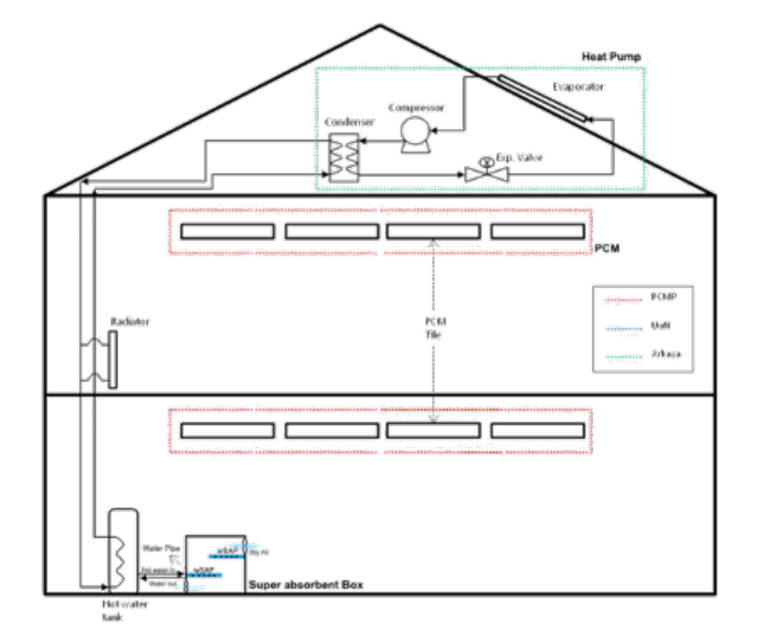
System Operation
The key component of the THEMAC system is the PCM/SAP panels integrated with a heat pump using hybrid solar/air energy sources. which could be driven by renewables. The PCM panel will contain PCM material and will act as thermal energy storage with enhanced heat transfer characteristics.
The hybrid solar/air heat pump will extract heat from the outside cold air/solar to warm the inside area during the winter and transfer the heat conversely during summer as an additional cooling tool that operates when required.
The THEMAC system is set to achieve the human comfort requirements of a temperature range of 22-26˚C and relative humidity of 30-70%
